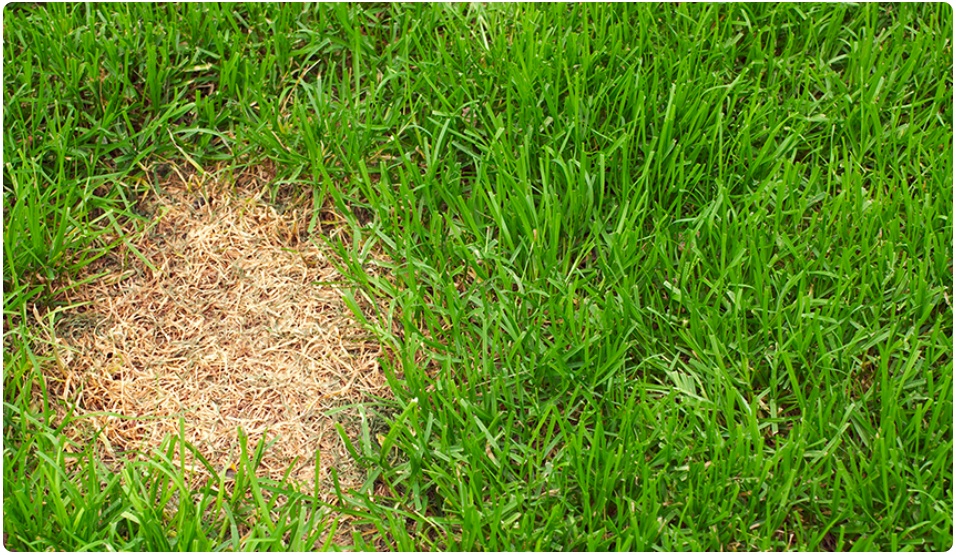DRY PATCH & HEAT STRESS

23 January 2021
This is a common problem when our summer temperatures increase on established and new lawns under 6-12 months old. A well-managed lawn with a good deep root system will survive our hot summers but occasionally we have to help nature to ensure all available water does reach the roots.
Dry Patch or Heat Stress can be caused by the following;
- Poor, shallow watering techniques encourage a shallow roots system. In the cooler months this won’t be a problem but as soon as temperatures increase the plant may wilt and go into stress.
- Loss of soil moisture in the soil profile. During a prolonged drought the subsoil may dry out and deep watering with a sprinkler for up to an hour in one spot may be required to start replenishing this moisture loss.
- Hydrophobic soils can be naturally occurring or caused by certain organics in the profile. These soils once dry, become very difficult to re-wet and a soil wetting agent is highly recommended to combat this problem.
- High thatch levels in an established lawn can prevent water from migrating into the profile.
What to do?
- Reduce stress from foot and vehicle traffic. Minimise any non-essential herbicide applications.
- Watering your lawn. No two sites are the same so the information we provide is a guide only. In South-East Qld we recommend approximately 10mm of irrigation in winter and at least 25mm in summer. Shady areas will not require this amount and exposed sites with sandy profiles may require a lot more. Measure the amount of water you are applying to any one spot on the lawn. A rain gauge is the best tool to measure the amount of water you are applying. Lawns new and old may be affected by extreme heat and dry so be on the lookout for telltale signs of stress which is usually the leaf turning to a blue-grey colour. Left unchecked and the leaf will turn brown and die. This doesn’t mean that the lawn is dead, but it may take a while for the new leaf to regenerate.
- Reduce thatch annually if required. Dethatch with a specialist scarifying machine or we can recommend a contractor to take care of it for you.
- Improved water penetration with decompaction and aeration. Once again let us know if you need a contractor to carry this out for you. For more information on decompaction follow this link. Apply a soil wetting agent to improve infiltration from dry patches. There are a lot of products on the market, but I like the concept of combining a Kelp or Seaweed product with soil wetting agents. Other products like “Wetta Soil”, “Natrakelp” and “Seasol” can be sourced from your local garden centre or you can source products online from the Lawn Solutions store like “Lawn Rescue” and “Lawn Soaker”. Follow the label instructions and water in well.
It doesn’t matter how drought-tolerant a lawn variety is, at the end of the day all plants need water. Some need more than others. Depending on when you installed it may take up to 12 months for a new lawn to become truly established.
As always, if you have any more questions please don’t hesitate to contact us for free expert advice on 1800ALLTURF (1800255873) or 07 5543 8304.
NOT SURE WHICH TURF TO CHOOSE?
Contact us for expert advice, or come & checkout our lawn display at Tamborine


